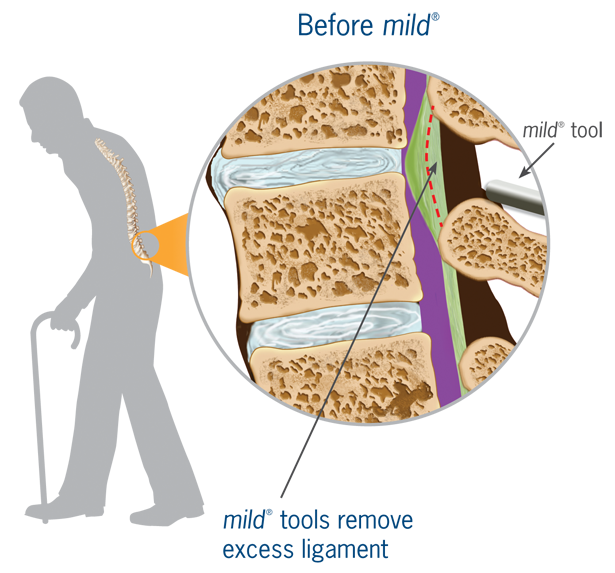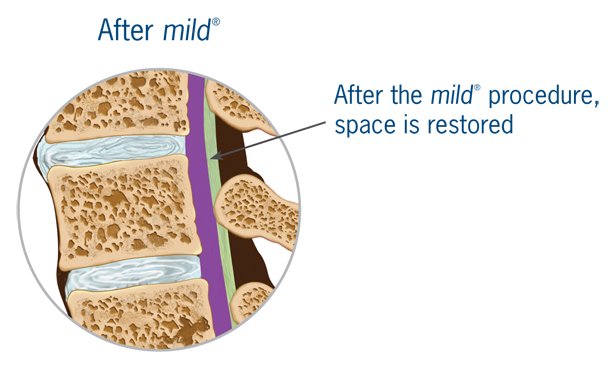MILD – Minimally Invasive Lumbar Decompression


Background – Lumbar Spinal Stenosis occurs when the spinal canal narrows with age. The spinal canal can narrow from disc degeneration, ligamentum flavum hypertrophy, or facet hypertrophy. The resulting narrowing leads to burning and cramping in the legs with walking which improves with flexion or bending forward. Patients often exhibit the “shopping cart sign” in that they lean forward while walking to relieve symptoms.
Minimally Invasive Lumbar Decompression (MILD) – When the lumbar discs degenerate, they lose height. This causes the ligamentum flavum that runs along the posterior aspect of the spinal canal to buckle and thicken. Ligamentum flavum hypertrophy is a common cause of spinal stenosis and can lead to neurogenic claudication. During the Minimally Invasive Lumbar Decompression procedure, a small cannula is inserted to remove portions of laminar bone and hypertrophic ligamentum flavum. The procedure is performed under constant fluoroscopic visualization and leaves the healthy ventral (anterior) fibers intact. The MILD procedure does not destabilize adjacent structures and does not use an implant. The procedure is so minimally invasive that the incision is closed with just a single steri-strip.
MILD Resources:
mild® Procedure Fact Sheet
Lumbar Spinal Stenosis Fact Sheet
http://www.mildprocedure.com/


